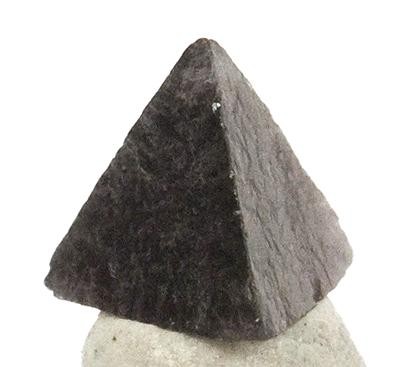The Mineral chambersite

Chambersite is a rare mineral of the boracite group, a
solid solution series of chloro-
borates, with
Boracite, Chambersite, and
Ericaite as the main members. It is the manganese-rich
end member of this group.
Chambersite is known for its equidimensional triangular crystals, which form in a lovely purple color but are always very small. Chambersite is named after Chambers County, Texas, where it was first discovered in 1957.
Chemical Formula
Mn3B7O13Cl
Color
Light to dark purple
Crystal System
Orthorhombic
Properties
Streak
White |
Hardness
7 |
Transparency
Transparent to nearly opaque |
Specific Gravity
3.5 |
Luster
Vitreous |
Cleavage
None |
Fracture
Uneven |
Tenacity
Brittle |
Other ID Marks
Darkens upon prolonged exposure to sunlight |
Crystal Habits
Crystals are in tetrahedral habit, often well formed looking like a pyramid. Crystals are almost always in isolated single floater crystals that are small in size. Seldom in penetrating or connected triangular crystals. May have triangular etchings in crystal faces, and terminations may be slightly modified. Crystals convert to an orthorhombic crystal structure upon cooling after their formation, though the isometric shape of the tetrahedron is preserved.
Uses
Chambersite is a rare collector's mineral, with its well-formed, small crystals making highly collectible specimens for thumbnail collectors.
Noteworthy Localities
The two best-known occurences for Chambersite are Barbers Hill, Mont Belvieu, Chambers Co., Texas; and the Venice Salt dome, Plaquemines Parish, Louisiana.
Common Mineral Associations
Halite, Anhydrite, Gypsum